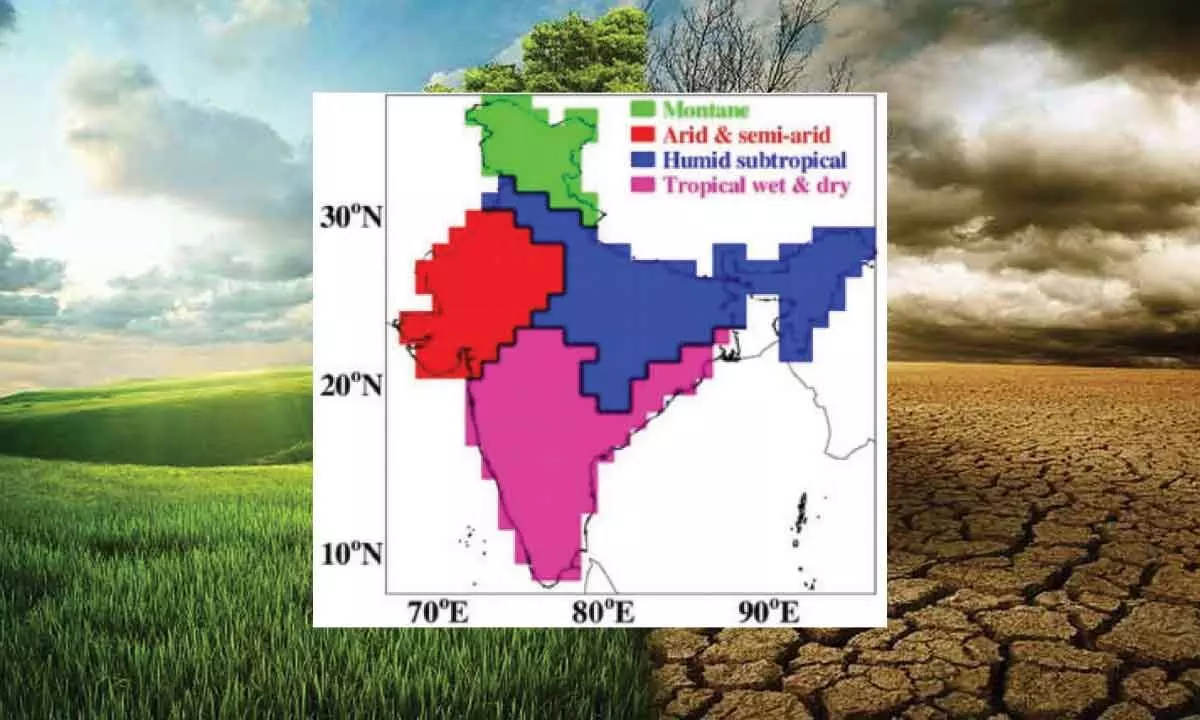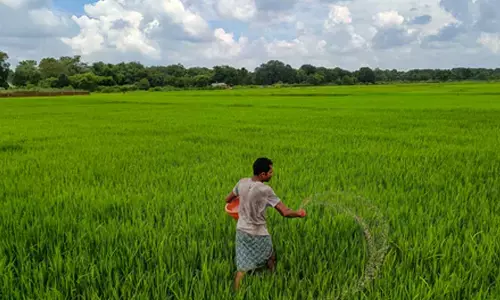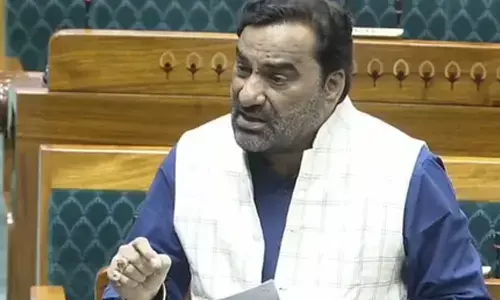Hyderabad: Significant rise in heatwaves in South

Finds UoH study conducted in collaboration with IIT-M, WRI and IMD
Hyderabad : Though heatwaves have been a recurring phenomenon in northern parts of India so far, there is a significant rise in the same in the southern peninsular India now. More heatwaves and fewer cold waves have emerged as the new normal in this region. To understand this new phenomenon, across the country, a study was conducted recently by the Centre of Earth, Ocean and Atmospheric Sciences, School of Physics, at the University of Hyderabad. It was led by Aninda Bhattacharya, Dr Abin Thomas and Dr Vijay Kanawade from UoH in collaboration with Prof Chandan Sarangi from IIT Madras, Dr P S Roy from World Resources Institute (WRI) and Dr Vijay K Soni from India Meteorological Department. The team used India Meteorological Department (IMD) daily maximum and minimum temperature data over the period from 1970 to 2019 to investigate the decadal variability and trends in the frequency of heat and cold waves across four climatic zones in India.
The study used four broad climatic zones, namely firstly, montane (climate is harsher, with lower temperatures in mountainous regions), encompassing the alpine climate in the northern states such as Jammu & Kashmir, Himachal Pradesh, and some parts of Uttarakhand, Sikkim and Arunachal Pradesh.
Second zone which they studied was arid region of Rajasthan and semi-arid climate of Gujarat and thirdly, humid subtropical – most of the Indo-Gangetic basin such as Bihar, Jharkhand and Chhattisgarh, Uttar Pradesh and West Bengal and some parts of Madhya Pradesh.
The third zone was of north-eastern subtropical highlands of Assam, Nagaland, and a majority of other North Eastern states which are subjected to warm and hot summers with high humidity and with ample rainfall during monsoon season. The fourth zone was the southern peninsular India where the majority of regions have a tropical dry and wet climate.
Dr Vijay Kanwade told Hans India that the study has not dealt exclusively on the various factors attributed to the rise in heatwaves in various south Indian states such as Telangana, Andhra Pradesh and others, but it can be said that the aerosols and moisture in air are adding to this new phenomenon.
The study found that days with anomalously higher temperatures are increasing during summer every year while the days with anomalously lower temperatures are decreasing during winter every year. The heat wave events are increasing at the rate of 0.6 events per decade while cold waves are decreasing at the rate of 0.4 events per decade.
Authors point out opposite trends in heatwaves and cold waves need more in-depth study. Heatwaves are more common over the arid and semi-arid climatic region of North India but now that part was witnessing fall in heatwaves while the cold wave conditions were on the rise. On the other hand, the southern peninsular region was witnessing more of heatwave conditions during summer and less of cold wave conditions during winter.

















